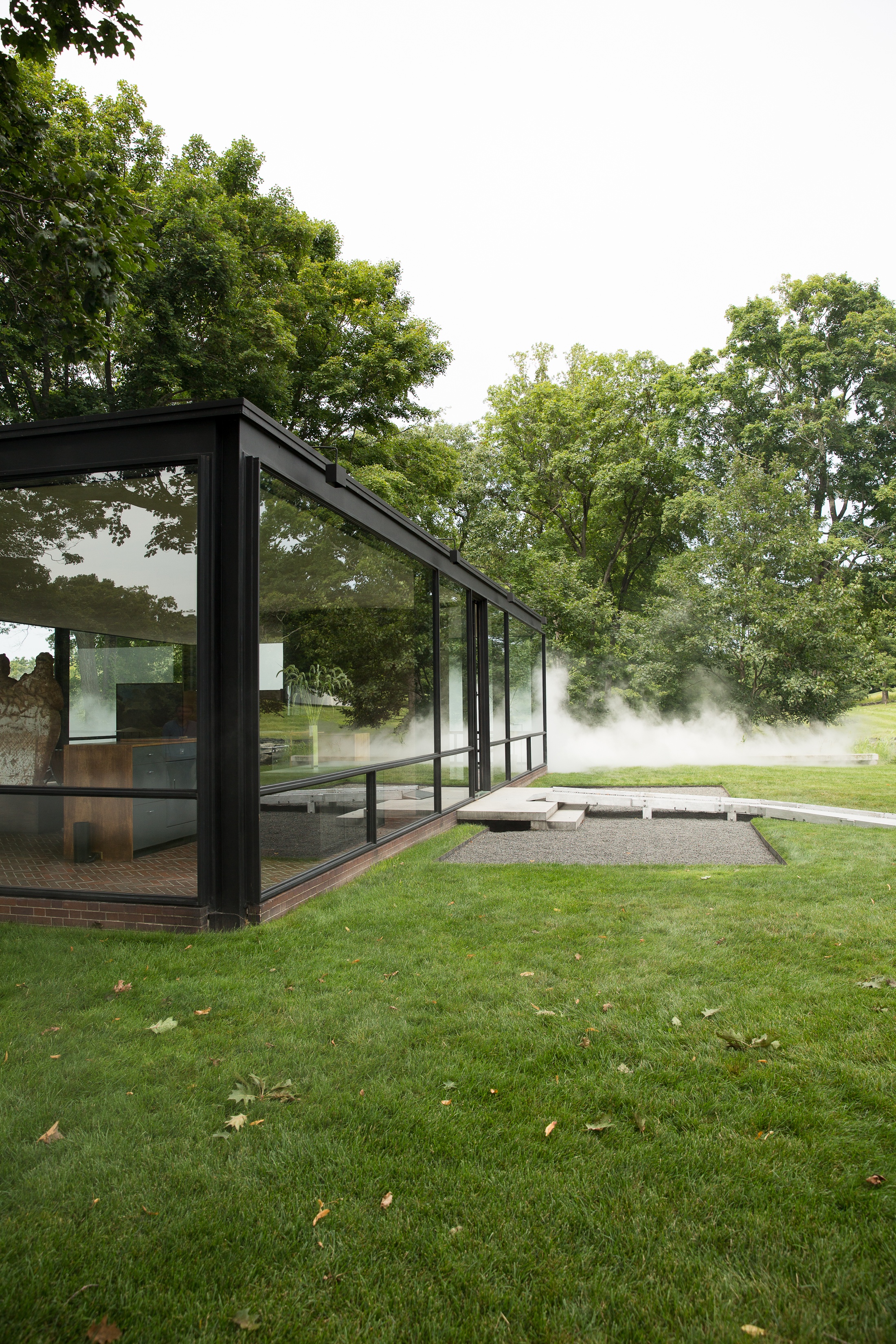Table Of Content

In between the dining area and open kitchen stands Elie Nadelman’s sculpture Two Circus Women (1930). A closet behind the Poussin separates the living space from the sleeping area. The residence Johnson built for himself in 1949 suggests a life pared down to Platonic essentials—and triumphantly ready for fishbowl scrutiny. There is something intimidating to people about the restraint such an existence would demand, as if the house itself were silently judging our own messy choices. Still, the appeal of all that self-control, that rigor, is practically narcotic. Tours of the Glass House are available in April through December and include self-guided tours and expanded educational opportunities for local communities; advance reservations are required.
Where to Celebrate 2024 Black History Month in NYC
Partners In Design: Alfred H. Barr Jr. and Philip Johnson - Wellesley College Computer Science Club
Partners In Design: Alfred H. Barr Jr. and Philip Johnson.
Posted: Sun, 24 Mar 2024 22:22:03 GMT [source]
The image below, which consists of a model of the Glass House, shows Johnson’s adaptation of these modernist ideas. For example, the closet behind the bed separates the sleeping area from the rest of the house, while the same thing happens in the kitchen thanks to the incorporation of the L-shaped cabinets. The dining area, the living area, and the study area are all a part of the open space of The Glass House. As the Brick House mostly functioned as a place where Johnson’s guests could sleep over, it was also referred to as the Guest House.
Comparing Philip Johnson’s Glass House with Mies’ Edith Farnsworth House
This provides ventilation from all four sides flowing through the house as well as ample lighting. Designed by the husband-and-wife team Charles and Ray Eames, Case Study House #8 set the standard for modern prefabricated architecture in the United States. Forming an asymmetrical V-shape, the roof also collects rainwater which is recycled for drinking and heating. Corrugated metal sheathing and interior brick walls insulate the home and conserve energy. Pritzker Prize-winning architect Glenn Murcutt is known for his earth-friendly, energy-efficient designs. The Magney House from 1984 stretches across a barren, wind-swept site overlooking the ocean in New South Wales, Australia.
Architecture school and Army service
philip johnson's restored 1940s wolfhouse doubles as an inclusive cultural space in new york - Designboom
philip johnson's restored 1940s wolfhouse doubles as an inclusive cultural space in new york.
Posted: Sun, 19 Nov 2023 08:00:00 GMT [source]
However, it would be wrong to suggest that the Glass House was fully completed once the building work was over. The design process of both the house’s interior and the landscape around it continued for quite a while after 1949. Johnson’s life partner, David Grainger Whitney, whom he met in 1960, would help Johnson with this part of the project. Whitney, who worked as a studio assistant to Jasper Johns, had a great eye for design.
Post a comment to this article
Picnicking, professional photography, tripods, and easels are not permitted. Our most popular tour includes The Glass House, Painting Gallery, Sculpture Gallery, outdoor sculpture, and Da Monsta, with a three-quarter mile walk over grass and paths. In finding that little knoll, I was in the middle of the woods in the middle of the winter and I almost didn’t find it.
In Johnson's lifetime (1906–
Browse this photo gallery to get a glimpse of the 20th century and how it influenced the future. At MoMA, Johnson worked with its founding director Alfred H. Barr Jr. and also with architectural historian Henry-Russell Hitchcock. As a museum trustee he continued to advise the Department of Architecture and Design for many decades.
Benefits for National Trust Members
Still, the house is a deliberate transformation, rather than imitation, of Mies’s aesthetic. And no longer is it an optimistic vision of a horizontal universal space but one rooted in the landscape by the cylinder containing a fireplace and bathroom—a “post-modern” house avant la lettre. Is it all a delightful masquerade, a firefly dancing on the surface of life and art for half a century?
Besides the Brick House, the New Canaan plot featured a gallery space, library, studio, lake pavilion called the Pavilion in the Pond, and several other buildings. The “uncanny,” as Freud emphasizes, however, can also be subtle and less striking—something, as he notes, like the fleeting reflection of oneself in a mirror, a sudden revelation of one’s own unwelcome image. In the case of the house of glass, perhaps its uncanniness derives less from its mimicking of the destroyed village than from its dually reflective and transparent surfaces, whose phantasmagoric effects create a montage of interior and exterior, of objects and sky. Johnson seemed to revel in these unhomelike appearances, through which he was at once present and absent in his own dwelling.
Social
The image, Burial of Phocion, depicts a classical landscape and was selected specifically for the house by Alfred H. Barr, Jr., the first director of the Museum of Modern Art. It is a small version of a marble sculpture that is in the lobby of the New York State Theater (now David H. Koch Theater) at Lincoln Center in 1964. Visit five significant houses designed by Philip Johnson in New Canaan, CT on an exclusive one day study tour in celebration of the 110th anniversary of Philip Johnson’s birth and the 10th anniversary of the opening of the Glass House to the public. The tour will visit the Hodgson House (1951), Alice Ball House (1953), Wiley Speculative House (1954), and Boissonnas House (1956) culminating with an evening tour of the Glass House property + festive reception.
The radical house Venturi built for his mother is frequently discussed in architecture and art history classes and has inspired the work of many other architects. Johnson was also an avowed promoter of new work in architecture, supporting the efforts of many younger figures and firms with financial support, publicity or introductions to MoMA. He marched publicly — with others from MoMA — to object to the pending destruction of New York’s Pennsylvania Station and successfully joined other prominent New Yorkers in fending off efforts to build on top of Manhattan’s Grand Central Terminal.
Other late works include the Cathedral of Hope in Dallas, the Habitable Sculpture (a 26-story apartment tower in lower Manhattan); The Children's Museum in Guadalajara, Mexico, and The Chrysler Center. In 1989, the New York City Landmarks Preservation Commission designated the Seagram's exterior, lobby, and The Four Seasons Restaurant as official city landmarks. In 2006, the building was added to the National Register of Historic Places. The group calls on all MoMA members and all alumni of the Harvard GSD to stop supporting either institution until they strike Johnson's name from all places and titles.
Installed in 1955, this circular pool adds balance between the rigid structures of the Glass and Guest House. Johnson later designed a gallery in 1965 to contain his painting collection. The art gallery is built into a grassy hill northeast of the Glass House. The Glass House has been "universally viewed as having been derived from" the Farnsworth House in Plano, Illinois, by Ludwig Mies van der Rohe according to Alice T. Friedman, though the Farnsworth House was not completed until 1951, two years after the Glass House. Johnson curated an exhibit of Mies van der Rohe work at the Museum of Modern Art in 1947, featuring a model of the glass Farnsworth House.[4] It was an important and influential project for Johnson and for modern architecture. The building is an example of minimal structure, geometry, proportion, and the effects of transparency and reflection.
That is why all of our trips are flightless in destination, fully carbon offset - and we have ambitious plans to be net zero in the very near future. Note that there is no public parking at Glass House itself, nor at the Visitor Center, and all touring guests must enter the grounds via this shuttle. Glass House is easy to get to from Manhattan, from either Grand Central or 125th Street, via Metro-North. Just take the New Haven line to the New Canaan stop and the train station is conveniently right across the street from the Glass House Visitor Center, where a shuttle van awaits to whisk you off on a five-minute drive to the property. – The Visitor Center is located across the street from the New Canaan train station. Tours will include the interior of the newly restored Brick House beginning on May 2, 2024.

Add a glass ceiling supported by steel rafters that throw a spectacular array of shadows when the sun is shining, and it's easy to see why, in 1991, Johnson called this "the single best room I ever designed." The house, which ushered the International Style into residential American architecture, is iconic because of its innovative use of materials and its seamless integration into the landscape. Explore the Glass House campus at your own pace on days dedicated to self-guided visits to the site. Educators will be available across the site to provide information and answer questions. Visitors on self-guided tour days will have access to The Glass House, Painting Gallery, Sculpture Gallery, Studio, Pavilion in the Pond, Monument to Lincoln Kirstein and both upper and lower landscapes. This option will include the newly restored interior of the Brick House beginning on May 2, 2024.
Inside the house, the staircase and chimney compete for the main center space. By then he had been considered one of the posterboys of Postmodernism, especially for his AT&T Building ( ), and yet also was seen as one of the biggest promoters of modernism, especially that of Mies van der Rohe. After all, he had served under Mies as co-architect of the Seagram Building in New York ( ) and had the opportunity to design its famed Four Seasons Restaurant in 1959, done very much in the style of Mies. Shigeru Ban, a Pritzker Prize Laureate, is an architect, educator, and humanitarian pioneering innovative solutions with a commitment to sustainability and social impact.

No comments:
Post a Comment